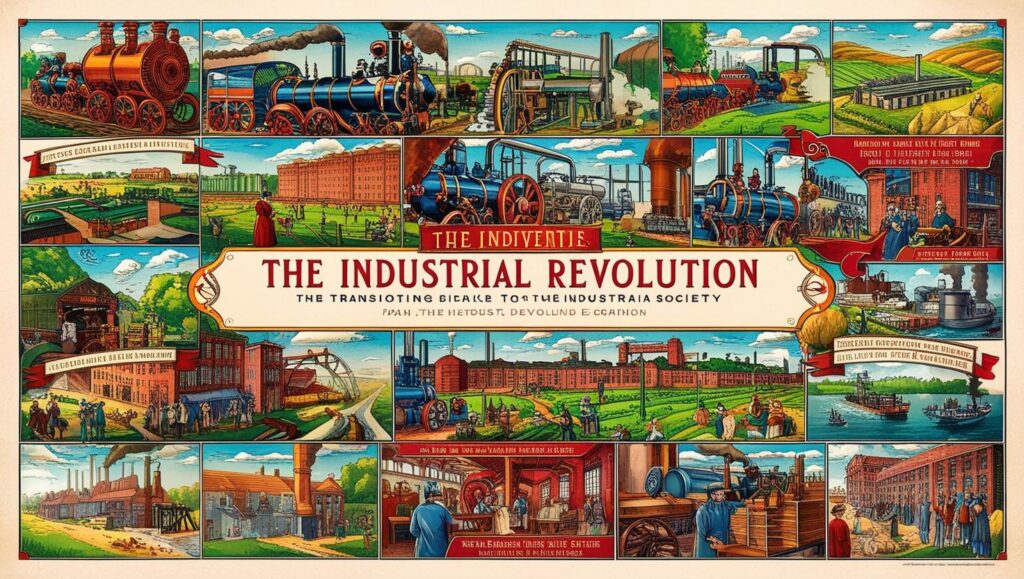
The industrial revolution is one of the key moments in history that has changed the way we live and work. These changes not only affected the industrialized world but also social and economic life as a whole. Let’s take a look at how the long journey of the industrial revolution began and how it continues to shape the world to this day.
Industrial Revolution 1.0: The Steam Engine That Changed Everything
The first industrial revolution began in the late 18th century, around the 1760s, in England. During this time, James Watt’s invention of the steam engine opened a new chapter in the industrial world. The steam engine allowed large machines to work efficiently, replacing the human and animal labor previously used in the production process.
Previously, most goods were produced manually in homes or small workshops. With the arrival of the steam engine, factories began to spring up, replacing traditional production. This marked a major change in the manufacturing sector, especially in textiles and metals. Not only that, this revolution also triggered massive urbanization, where many people from the countryside moved to the city to work in factories.
Industrial Revolution 2.0: Electrification and Mass Production
At the end of the 19th century, the industrial world entered a new phase known as the Industrial Revolution 2.0. During this time, electricity began to be used to power machines, which made the production process faster and more efficient. This invention allowed factories to work on a larger scale.
One of the biggest innovations of this era was the assembly line system introduced by Henry Ford. With this system, the production of goods, especially cars, became faster and cheaper. Ford was able to produce cars at a lower cost, which in turn made vehicles more affordable for many people. In addition, this mass production system changed the way we look at the industry as a whole.
Industrial Revolution 3.0: Automation and Computerization
At the end of the 20th century, the industrial revolution entered its third phase, characterized by the arrival of computers and automation. Digital technology began to be applied in various industrial sectors, from data management to machine control. Factories are becoming smarter thanks to computer systems that can manage production processes automatically.
Technologies such as robotics are being used in production lines, while software helps design and optimize products. In addition, computers are also being used for data analysis and more accurate decision-making. All of this allows industries to move faster, with fewer errors and lower costs.
Industrial Revolution 4.0: Artificial Intelligence and the Internet of Things
Today, we are in the midst of the Industrial Revolution 4.0. In this era, advanced technologies such as artificial intelligence (AI), the Internet of Things (IoT), and big data have completely changed the way we work. Machines and devices are now interconnected in a system that allows them to communicate with each other in real time.
By using this smart technology, factories are becoming more efficient and more flexible. Industry 4.0 allows companies to produce goods with higher quality, faster, and more personalized. Production processes are also increasingly automated, with robots that can adapt and work alongside humans. Artificial intelligence makes decision-making faster and more precise.
The Future of Industry 5.0 Development
After passing through phase 4.0, we are now starting to talk about Industry 5.0, which prioritizes collaboration between humans and machines. In this era, although technology is very sophisticated, the role of humans is still very important. Machines will help humans to work more creatively and produce more personalized products according to individual needs.
Industry 5.0 focuses not only on automation and artificial intelligence but also on innovation and a more personalized user experience. Technology will be used to enhance creativity, accelerate innovation, and enable companies to adapt quickly to market changes.
The Impact of the Industrial Revolution on the World
From the steam engine in industry 1.0 to artificial intelligence in industry 4.0, the industrial revolution has changed the way we work, produce, and live. Each phase of the revolution brought advancements that allowed the world to become more connected, efficient, and productive. We have witnessed how technology accelerates production processes and opens up new opportunities in various sectors.
As we move towards the future with Industry 5.0, there will be more challenges and opportunities. But one thing is for sure: the industrial revolution will not stop, and we will all continue to be affected by these technological advancements in our daily lives.
Tags: Teknik Logistik | S1 Teknik Logistik | S1 Digital supply Chain Telkom | Telkom University